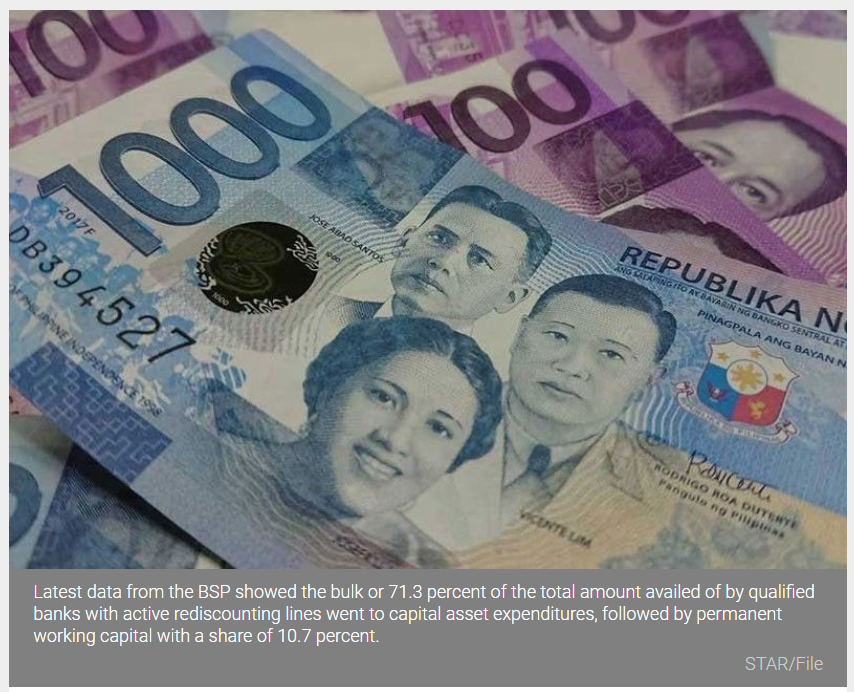Philippines: Rediscount loans plunge 78% to P27 billion in 2020
MANILA, Philippines — Peso rediscounting loans extended by the Bangko Sentral ng Pilipinas plunged by 78 percent to P26.9 billion last year from a record P122.7 billion in 2019 due to lack of takers amid the massive liquidity released by the BSP in the financial system to cushion the impact of the pandemic.
Latest data from the BSP showed the bulk or 71.3 percent of the total amount availed of by qualified banks with active rediscounting lines went to capital asset expenditures, followed by permanent working capital with a share of 10.7 percent.
The BSP said commercial credits accounted for 18.1 percent of total, while rediscounting loans for importation cornered 10.9 percent and trading of goods with 7.1 percent.
Banks tapped the facility only in March and April as Luzon was placed under enhanced community quarantine to slow the spread of the virus, as well as in August and September as the National Capital Region (NCR) and nearby provinces reverted to modified enhanced community quarantine for two weeks after shifting to general community quarantine in June.
Michael Ricafort, chief economist at Rizal Commercial Banking Corp., said relatively large excess liquidity in the financial system amid massive easing and other liquidity enhancing measures have reduced the need for banks to tap the facility.
“Lower demand for loans recently due to the adverse effects of COVID-19 also fundamentally reduced the need for banks to tap the BSP rediscounting facilities,” Ricafort said.
Latest data from the central bank showed credit growth eased to a 14-year low of 1.9 percent in October from 2.6 percent in September as banks anticipate higher non-performing loans due to uncertainties brought about by the pandemic.
Instead, banks opted to park excess funds in the liquidity absorption facilities of the central bank including the term deposits as well as BSP securities.
“This is manifested by the large demand and bids for the weekly term deposit and BSP securities as well as for various government securities auctions,” Ricafort said.
According to the BSP, the decline in rediscounting availments could be attributed to the banks’ high liquidity position coupled by the deceleration of bank lending due to weaker corporate sector performance.
Despite the decline, banks continue to recognize BSP’s rediscount facilities as a funding option should liquidity no longer be sourced from the market. About 50 banks maintain rediscounting lines with the BSP as part of their contingency funding plan.
The BSP has emerged as one of the most aggressive central banks in the world, slashing interest rates by 200 basis points last year to bring the benchmark rate at an all-time low of two percent, lowering the reserve requirement ratios for banks, suspending the auction of term deposits and lowering the volume of the overnight reverse repurchase facility, among others.
Ricafort said the possible lowering of the RRR in the coming months could continue to infuse more liquidity into the financial system to help the economy recover from the pandemic-induced recession.
The Monetary Board approved earlier the temporary reduction in the spread on peso rediscounting loans relative to the central bank’s overnight lending rate to zero for a period of 60 days or until May 19.
The validity of the relief measure was extended thrice to July 17, to Sept. 30, and to Jan. 31 next year.
The central bank wants to make sure there is available credit to productive economic sectors by lowering effective lending rates and to encourage banks to lend to businesses to help them recover from the COVID-19 crisis.
Source: https://www.philstar.com/business/2021/01/12/2069748/rediscount-loans-plunge-78-p27-billion-2020


 English
English




